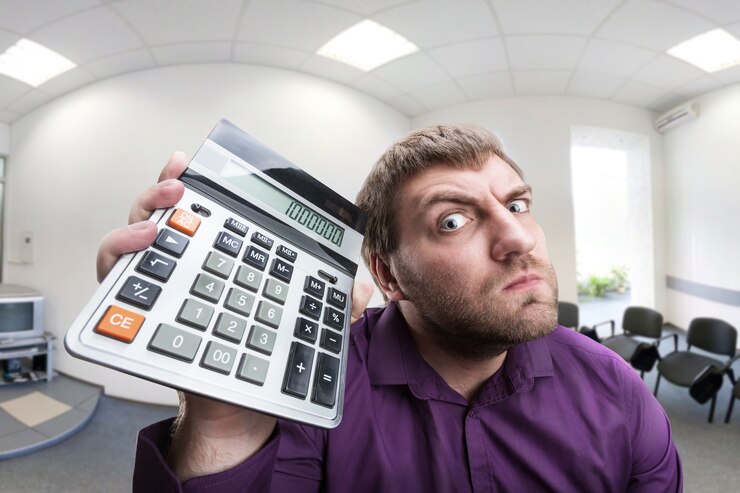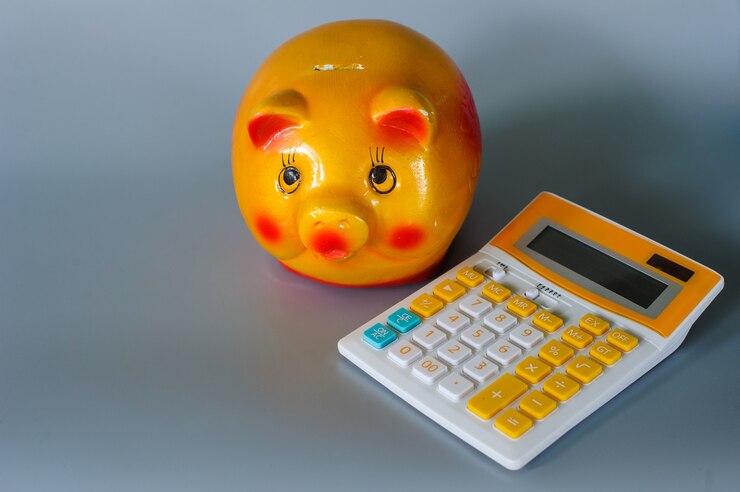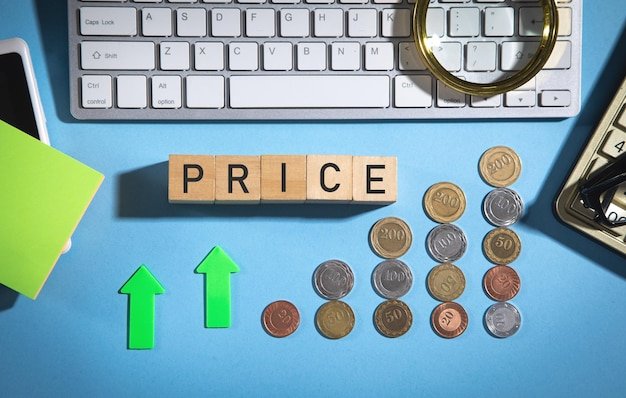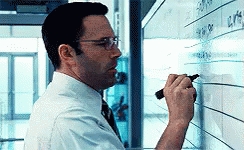How to correctly calculate costs and make the right strategic decisions
-
Leonid Vlasov
Copywriter Elbuz
Cost: key aspects and calculations for business. It all starts with mysterious numbers. They are hidden inside every enterprise, occupying the ledger and hiding inside impenetrable formulas. They are a cost. What happens when these numbers are solved? How do they help entrepreneurs make decisions and improve their businesses? Now I will tell you how cost becomes a key tool for success and what aspects and calculations need to be taken into account to effectively run a business. Join me on this exciting journey into the world of costing and discover new opportunities to grow your business.

Glossary
- Cost: the total costs incurred in producing a product or providing a service.
- Cost planning: the process of determining the costs required to produce a product or provide a service in order to optimize business processes and achieve profit.
- Costing: determining the exact cost of producing a product or providing a service.
- Cost Structure: A detailed breakdown of the cost into major components such as raw materials, labor, equipment depreciation, facility rental, and other operating expenses.
- Factors influencing the cost: changes in prices for raw materials, seasonal fluctuations in demand for goods, changes in legislation and tax policy.
- Types of cost: direct and indirect cost. Direct costs include only the direct costs of materials and labor needed to produce a product or provide a service. Indirect costs include costs that cannot be directly attributed to a specific product or service, such as facility rental, equipment depreciation, and utilities.
- Costing: There are several costing methods, including the total cost method, the standard cost method, and the standard cost method.
- Cost reduction methods: optimization of production processes, efficient use of resources, reducing costs of materials and labor, reviewing contracts with suppliers and searching for alternative suppliers, business automation -processes.
Cost plays an important role in business, allowing you to evaluate the efficiency of production processes and make rational decisions to increase profits. Planning and cost calculation are important tasks for all entrepreneurs, and when choosing methods to reduce costs, you should take into account the specifics of your business and external factors affecting the market.
What is cost and how to calculate it?
Today I want to talk about an important aspect of business - cost. Let's figure out what it is, how to calculate it and what calculation methods exist.
What is cost? Cost is the totality of all costs associated with the production, promotion and sale of goods or services. When calculating the cost, the company takes into account many factors, such as the price of raw materials, the cost of fuel, labor costs and other costs associated with the production and sale of goods.

Why calculate cost? Costing is an important element of business management. It allows you to assess the profitability and profitability of an enterprise, determine the price of goods and services, and make informed decisions to improve the financial condition of the company.
What costing methods exist? There are several methods for calculating costing, and each of them is suitable for certain types of business. Let's look at some of them:
Full cost - The full cost method involves taking into account all costs associated with the production of goods and services. The calculation includes both direct costs (raw materials, labor) and indirect costs (rent of premises, utility bills).
Share costing - The share costing method is used in joint production activities when several enterprises contribute to the production of a good or service. In this case, the cost is divided among the participants in accordance with their contribution.
Standard cost - The standard method of calculating cost is based on the use of standards to determine the cost of producing a unit of goods or services. Regulatory data is developed based on analysis of production processes and enterprise experience.
In one of my previous jobs, I conducted a cost analysis for a furniture manufacturing company. Using the full cost method, I calculated all the costs associated with the purchase of raw materials, labor, rental premises and other costs. Thanks to a detailed analysis, it became clear that in the production process it is possible to reduce some costs, which will affect the level of profitability of the business.
Based on my experience, I can confidently say that when calculating the cost, it is necessary to take into account all possible costs, both direct and indirect. I recommend carefully studying all the factors influencing the cost of production and assessing their impact on the financial condition of the company.
Cost is an important indicator that helps assess the efficiency of a business. Calculating the cost allows you to determine the profitability and profitability of the enterprise, and make informed decisions to improve the financial condition of the company. Use different costing methods depending on the specifics of your business, and remember to take into account all the factors that affect costs.
I hope this information helps you better understand the concept of costing and its role in business. If you have any questions or require additional information, do not hesitate to contact me. Good luck running your business!

Why plan and calculate costs: cost optimization and efficiency improvement
When I first encountered the concept of cost, I realized that it was not just a technical calculation, but an important business management tool. Planning and cost calculation help determine the break-even point, as well as adjust the company's financial strategy in accordance with current market trends and inflation rates.
The main goal of planning and costing is to optimize costs and increase the efficiency of production and business processes. This helps the management team more accurately predict income and expenses, minimize the risk of losses and make more informed management decisions.

The role of cost in business
Cost is the total cost incurred by a business for production units of product or service. The cost calculation includes both direct costs for materials, labor and energy, as well as indirect costs for equipment maintenance, rental of premises, administrative and selling costs.
Correct determination of cost helps to understand what costs need to be compensated and how much profit each unit of production should bring. The break-even point is the level of revenue at which a business covers all its expenses and does not incur losses. Analysis of the break-even point allows you to determine the minimum sales volume to achieve the desired profitability and develop a strategy to increase revenue.
Planning and cost calculation
When planning and cost calculation, it is necessary to take into account current market conditions, the presence of competitors, inflation rates and demand dynamics. Only in this way can an optimal strategy for the production and commercialization of products be developed.
In my practice, I came across a situation where incorrectly calculated production costs caused financial problems and even bankruptcy of the company. Therefore, I developed my own approach to optimizing costs and improving the financial sustainability of a business.
Cost Optimization Strategies
One of the key best practices I would like to share is to look for opportunities to reduce production costs. To do this, you need to carefully analyze each expense item and look for ways to optimize.
For example, vetting suppliers and looking for alternative raw materials can reduce purchasing costs. Automation of production processes and the introduction of modern technologies help increase labor productivity and reduce labor costs.

Tracking cost indicators
Tracking and analyzing cost indicators is an important step in effective business management . This helps to detect the causes of unwanted changes in costs and take timely measures to eliminate them.
I personally recommend keeping detailed records of expenses and generating cost reports regularly. This will help to better understand the dynamics of change and identify factors influencing costs. Only in this way can you respond in a timely manner to changes in market conditions and make informed management decisions.
Assessing the effectiveness of business processes
An important aspect in planning and cost calculation is assessing the effectiveness of business processes. It is necessary to analyze all stages of production, identify bottlenecks and look for opportunities for optimization.
I propose to make efforts to develop and implement a process control and management system. Such a system will help identify ineffective links, minimize wastage of time and resources, and improve product quality.

Summary
Cost is an integral part of business management, which helps optimize costs and increase efficiency activities. Planning and cost calculations taking into account key market factors and inflation trends help a business achieve financial stability and profitability.
However, to achieve success, it is necessary to constantly monitor cost indicators, monitor the efficiency of business processes and try to constantly optimize costs. This is the only way to achieve competitive advantages and maintain the financial stability of the company.
Intelligent planning and costing help businesses achieve sustainability and profitability. Remember to monitor indicators and strive for optimization - this approach will help you successfully overcome any financial challenges.
| What to do | What NOT to do |
|---|---|
| Keep detailed records of expenses | Ignore factors of cost changes |
| Analyze cost items and find optimization opportunities | Inflate prices and overhead costs |
| Introduce modern technologies and automate production | Lower costs and product quality |
| Regularly evaluate the effectiveness of business processes | Ignore changes in market conditions |
| Develop a process control and management system | Invest additional resources in ineffective parts |
Thus, planning and costing play an important role in effective business management. They help optimize costs, increase the efficiency of business processes and achieve financial stability. Apply analytical and control skills to successfully manage your business and achieve your goals.
Don't be afraid to use planning and costing tools to help you achieve financial success and business sustainability.
Section: Cost structure
Definition and structure of cost
Cost is a key concept for effective business management. It allows you to determine how much money and resources are needed to produce a product or service, and also helps to assess the profitability of a business.

Cost consists of various categories of expenses that are directly or indirectly related to production. Depending on the structure of the organization and the characteristics of production, these costs can vary significantly. However, regardless of the industry, the cost usually includes the following expense items:
Costs of raw materials and materials: this costs of necessary materials and components that are used in the production process. This may be raw materials for the production of a product or materials needed to provide a service.
Energy costs: such costs include energy costs, including fuel, electricity and others types of energy required to operate equipment and perform production operations.
Costs for the acquisition and maintenance of equipment and machinery: these are the costs of purchasing production equipment, its rental, technical maintenance and repair. These costs can be significant, especially when new technologies are introduced.
Remuneration of employees of the enterprise: these are the costs of wages and social contributions paid to employees engaged in production process. This expense can be significant, especially for businesses with a large number of employees.
Marketing and promotion expenses: to successfully promote goods and services in the market, it is necessary to invest in marketing and promotional activities. These expenses allow you to attract customers and increase sales.
Administrative costs: these are the costs of ensuring the operation of the enterprise as a whole, including the cost of renting premises, utilities , legal support and other necessary resources.
For a more detailed understanding of the cost structure, consider the following table:
| Expense items | Included | |
|---|---|---|
| Costs of raw materials and materials | ✅ | |
| Energy costs | ✅ | |
| Energy costs equipment | ✅ | |
| Employee compensation | ✅ | |
| Marketing expenses | ✅ | |
| Administrative costs | ✅ |
As you can see, the cost structure includes a variety of costs that arise in the production of a product or service. It is very important to track and analyze each expense item in order to optimize business processes and increase the profitability of the enterprise.
The Importance of Proper Costing
I hope you can already see how important it is to calculate costs correctly to effectively manage your business. Accurate calculation helps determine the selling price, control costs and identify weaknesses in the production process.

Based on my experience, I can say with confidence that correct cost calculation allows:
- Optimize production processes by identifying areas where costs can be reduced and efficiency improved.
- Correctly price goods or services to ensure business profitability and compliance with market conditions.
- Plan the budget and financial resources, taking into account all production costs.
- Make informed decisions on further business development based on financial indicators.
Example of a real situation and solution
Let's look at a specific example that will help you better understand how costing is carried out. Let's imagine that you are the owner of a small manufacturing enterprise engaged in the production of furniture.
You have decided to expand your product range and start producing a new chair. To do this, you need to calculate the cost of the new product to determine its price and profitability.
Having analyzed all the costs associated with the production of a chair, you have come to the following cost structure:
- Costs of raw materials and supplies account for 40% of total cost. This category includes the costs of wood, paints, adhesives and other materials needed to make the chair.
- Energy costs account for 10% of the total cost. This includes the cost of electricity to run the equipment and the use of tools in production.
- Equipment costs account for 15% of the total cost. This includes purchasing and maintaining the tools and equipment needed to produce the chair.
- Remuneration of the company's employees is 25% of the total cost. This category includes the cost of wages for workers involved in the production process.
- Marketing and promotion costs account for 5% of the total cost. This includes the costs of advertising, packaging and other marketing activities aimed at promoting the chair in the market.
- Administrative costs are 5% of the total cost. This includes rental costs, utilities and other administrative expenses.
Thus, taking into account all cost items, you calculated that the cost of a new chair is 300 hryvnia. Based on this figure, you set the selling price of the chair at 450 hryvnia to ensure the profitability of the business.
Summary
I hope that sharing my experience and knowledge about cost structure with you has helped you better understand this important topic. With proper costing, you can manage your business effectively and make informed decisions based on evidence.
Don't forget to monitor your expenses, conduct regular analyzes and optimize business processes to increase the profitability of your enterprise. Good luck in achieving your goals and feel confident about your costing!

What affects the cost
External and internal factors that determine cost
Before we begin to consider calculation methods and different types of cost, it is important to understand that this concept is not constant. The cost of production is determined by many components, the value of which is constantly changing in one direction or the other.
For example, the cost of renting a production facility or the price of gasoline can change at any time, and all these changes will certainly affect the cost of the product.
Factors influencing the cost value can be divided into external and internal.
External factors
External factors include causes that are beyond the control of the organization. They are often related to the economic situation in the country and changes in economic policy or legislation. For example, an increase in taxes can lead to higher production costs. It is necessary to carefully monitor economic trends and changes in legislation, as they directly affect the success of the business and the cost of production.
Internal factors
Internal factors include those reasons that depend on the organization itself. These include factors such as the level of technological equipment of the enterprise, the amount of raw materials, the use of efficient production processes, the level of defects and labor costs. All these factors significantly affect the cost of production.
For example, using outdated technologies can lead to increased production costs, while switching to more efficient technologies will reduce costs. It is also necessary to take into account the amount of resources used, since their excessive use can significantly increase the cost of production.

Analysis and decision making
To effectively manage a business, it is necessary to conduct cost analysis and make decisions decisions based on the data obtained. Cost analysis allows you to identify the most expensive components and find ways to reduce them.
One way to conduct cost analysis is to divide the cost into separate types of costs. For example, you can highlight the costs of raw materials, labor costs, equipment depreciation and other components. This approach allows you to better understand the cost structure and determine which ones can be reduced.
Based on the analysis, decisions can be made to reduce costs and optimize production. For example, you can improve technological processes, reduce waste, or optimize the use of resources.
Case study
I can confidently say that in our company we have been able to reduce production costs thanks to the introduction of new technologies. Our team conducted a cost analysis and identified a number of problematic issues. For example, the use of outdated equipment and low-quality raw materials led to high defect rates and increased costs.
We decided to update the equipment and improve the quality of raw materials. This allowed us to reduce the number of defects and reduce production costs by 15%. In addition, we introduced new technological processes that increased productivity and reduced labor costs.
![]()
Based on this experience, I can say that upgrading technology and improving the quality of raw materials are effective ways to reduce costs. It is also important to continuously analyze costs and optimize production processes to achieve maximum efficiency.
Summary
In this section, we examined the influence of external and internal factors on the cost of production. External factors, such as the economic environment and changes in legislation, are often beyond the control of the organization, but must be taken into account to successfully manage the business. Internal factors such as technology levels and defect rates can be improved through analysis and decision making.
It is important to understand that for effective business management it is necessary to constantly analyze costs and look for ways to reduce them. The use of new technologies, optimizing the use of resources and improving the quality of raw materials can significantly reduce costs and increase the competitiveness of a company.
This section provides only an overview of the key aspects of cost impact and calculation methods. In the following sections, we will take a closer look at the different types of costs and describe in detail the methods for calculating them.
Overview of important aspects of the impact on cost
| What to do | What to avoid | |
|---|---|---|
| - Consider the influence of external factors | - Don’t ignore economic situation | |
| - Conduct cost analysis and cost calculation | - Don't be limited by external factors | |
| - Improve processes | - Don't forget about internal factors | |
| - Upgrade equipment and improve the quality of raw materials | - Do not abuse resources |

Cost: different types and their calculations
Types of cost in business
In business practice, cost is one of the most important factors that determine the success of the enterprise. Proper consideration and calculation of costs helps you manage your business effectively and make informed decisions. Cost can be divided into several types, each of which has its own characteristics and purpose.
The cost of the workshop cost is determined by the costs of all workshops of the enterprise. It consists exclusively of direct costs that are directly related to production. This is the cost of materials, raw materials, components, direct labor and expenses related directly to the production process. Shop cost is an integral part of the total cost and is used for internal analysis and cost management.
Manufacturing cost includes all costs of producing a product. It is calculated by adding the costs of managing the organization to the workshop cost. In addition to materials, direct labor and direct costs, production costs also include indirect costs such as depreciation, rent and administrative staff costs. Production cost is an important indicator that allows you to estimate the total amount of production costs.
The total cost is the sum of all costs for the production and sale of goods. It is calculated by summing production costs, sales costs and non-production costs. Full cost allows you to more fully assess the costs associated with the production of products or the provision of services.
Cost calculation methods
Cost calculation is an important step for estimating production costs and allows you to make rational management decisions. There are several methods for calculating costs that can be used depending on the specifics of the enterprise and industry.
Direct calculation method is the simplest and most straightforward way to determine cost. It is based on the accounting of direct costs, such as the costs of materials and labor directly related to the production of a product or the provision of a service. This method is well suited for small businesses and simple services.
The normative calculation method is more complex and takes into account direct and indirect costs based on established regulations and standards. This method allows you to more accurately estimate production costs, as it takes into account various factors, such as material consumption rates and labor standards.
The individual cost analysis method allows for a more detailed and analytical cost calculation. It takes into account all direct and indirect costs, as well as factors influencing changes in costs. This method requires deeper analytics and can be useful for companies with high costs and complex production processes.
Importance of costing for business
Understanding and accounting for costing is essential for effective business management. Cost analysis and calculation allow entrepreneurs and managers to make informed decisions based on real data.

Cost helps assess the profitability of production, determine prices for goods and services, and optimize costs. It is the basis for budget planning, cost control and management decision-making. Cost analysis allows you to identify weaknesses in the production process and find ways to improve them.
Cost is an integral component of a successful business. Correct understanding and calculation of costs helps you make informed decisions, optimize production processes and achieve high profitability.
How to correctly calculate the cost: tips from practice
Types of cost and their features
When calculating costs, it is necessary to take into account various types of costs. What are the types of cost and what distinguishes them?
Production cost
Production cost includes the production costs of one workshop, general business expenses and auxiliary production costs. It is important to note that this cost item takes into account only those costs that are directly related to the production of the product.
Total cost
The total cost of production consists of production costs and expenses for selling products, including selling costs and non-production costs. This is the totality of all costs that were associated with the process of production and sales of products.
Cost calculation methods
Cost calculation depends on the chosen calculation method and the type of costs that need to be taken into account. Let's look at several basic calculation methods that are widely used in business.
Direct cost method
The direct cost method is one of the simplest and most common methods of calculating product costs. To use it, it is necessary to take into account only direct costs, such as the cost of raw materials, costs of auxiliary technological processes and fuel.

Calculation method with time standards
This method is based on the preliminary determination of time standards for each operations of the production process. Then the cost is calculated, taking into account labor costs taking into account time standards.
Standard cost method
Standard cost method is based on predetermined cost standards for producing a unit of output. To apply it, it is necessary to take into account cost standards for raw materials, materials, energy and other resources used in production.
Tips from practice
I am sure that when carrying out cost calculations it is important to take into account the following aspects:
- Carefully analyze the cost structure and determine which expenses should be included in the cost calculation.
- Use the appropriate calculation method based on your business and product type.
- Don't forget to factor in support costs and selling expenses as these also contribute to the total cost of production.
- Continuously monitor changes in cost structure and update costing methods according to changes in the market.
I believe that correct costing plays a key role in effective business management. I hope that my experience and advice will help you conduct cost calculations and make informed decisions for your business.
"Success is the ability to skillfully handle money" - Charles Bukowski.
Overview of the table
The table below presents the content and main recommendations for calculating product costs:
| What to consider | What not to do |
|---|---|
| Raw Material Costs | Ignore Ancillary Costs |
| Costs of auxiliary technological processes | Do not take into account commercial expenses |
| Remuneration taking into account time standards | Do not update cost calculation methods |
| Standard costs for raw materials, supplies and energy | Do not analyze changes in cost structure |
Case study
In my own experience with a manufacturing company, I encountered the problem of incorrect costing. We were overlooking some ancillary costs, which resulted in inflated product costs.
To solve this problem, we conducted a process audit and took into account all ancillary costs when calculating production costs. This allowed us to accurately determine the cost of products and make informed pricing decisions.
Better Selection Practices
Determining the correct cost of products is an important aspect of effective business management. Below are some practices that will help you make the right decision when calculating costing:
- Regularly update your costing methods according to changes in business processes.
- Analyze changes in cost structure and make decisions based on this data.
- Contact cost management experts or consultants for additional tips and tricks.
- Use specialized software to automate the costing process.
Based on my experience and knowledge in the field of costing, I am confident that proper calculation and accounting of product costs can significantly impact the financial performance and performance of a business.
Stay alert and proactive when performing product costing and your efforts will be rewarded!

Remember that every business is unique and costing methods may vary. It is important to tailor them to your specific needs and conditions. Good luck with cost analysis and managing your business!
"Success is finding something you truly love to do and living that passion every day." - Mark Zuckerberg.
Cost reduction methods: my experience and advice
While working on my business, I was faced with the problem of high costs and production costs. Therefore, I decisively began to look for effective methods of reducing costs in order to increase the profitability of my enterprise and become more competitive in the market.
I have several strategies that have helped me achieve significant cost savings. In this chapter, I will share my experience and give tips on using these methods.
Optimization of activities
The first step in reducing costs was to optimize the activities of my enterprise. I constantly worked to improve production efficiency and reduce costs. To do this, I used the following techniques:
Introduction of modern equipment and technologies. I invested in updating and modernizing production equipment. This allowed me to increase the speed of work and improve the quality of products.
Automation of business processes. I carried out a set of measures to optimize work processes. This made it possible to speed up the solution of most tasks in the enterprise and reduce the need for additional resources.
Staff development. I have invested in training and development of my employees to improve their professional skills. This reduced the number of errors and increased work efficiency.
Cost Reduction
Detailed and ongoing cost control is the second strategy I used to reduce costs. After collecting cost information, I analyzed the results and developed a plan to reduce them. Here are a few techniques that helped me with this:
Analyzing and selecting suppliers. I carefully analyzed the offers of various suppliers and chose the most favorable terms of cooperation. This has helped me reduce purchasing costs and reduce expenses on an ongoing basis.
Pricing policy optimization. I studied the competitive landscape and approached pricing more strategically. By setting optimal prices, I was able to increase sales volume and, accordingly, profits.
Avoid unnecessary expenses. I carefully analyzed all processes in the enterprise and eliminated unnecessary costs. For example, I changed my storage and inventory management system to avoid unnecessary product wastage.

Analysis and planning
Analysis and planning is an integral part of cost reduction and successful business management. I paid special attention to this aspect and used the following methods:
Regular analysis of financial statements. I analyzed financial performance to identify weaknesses and find ways to improve them. This helped me make informed decisions and plan for the future.
Forecasting demand and changes in the market. I studied the dynamics of demand for my products and followed changes in the market. This helped me adapt to new conditions and predict potential risks.
Risk management. I developed risk management strategies to minimize the negative consequences of unexpected situations. This allowed me to conduct business more confidently and incur fewer losses.
Here are some methods and strategies that have helped me reduce the cost of my business. Thanks to these measures, I achieved greater profitability and increased competitiveness in the market. I hope that my experience and advice will help you in effectively managing your business!
1 - I am convinced that proper cost reduction is an important step towards improving the financial health of your business. Use these methods and strategies to become more profitable and competitive.
2 - Constant work on optimizing operations and reducing costs is the key to the success of your business. Give this issue enough attention and you will see significant results.
I recommend that you apply these methods to reduce the cost of your business. Just a few steps and you can increase your profitability and efficiency!
| Action | Helpful | |
|---|---|---|
| Invest in modern equipment | ✔️ | |
| Pricing policy optimization | ✔️ | |
| Regular analysis of financial statements | ✔️ | |
| Avoiding unnecessary expenses | ✔️ | |
| Automation of business processes | ✔️ |
It is important to remember that each business has its own specifics and requires an individual approach. Therefore, use these recommendations as a starting point and adapt them to suit your needs and capabilities.
I hope that my experience will be useful to you in reducing costs in your business. Good luck in your business endeavors!

Cost: my experience in calculations and key aspects of successful business management
In this chapter, I would like to share my experience in the field of costing and talk about the key aspects that need to be considered for effective business management. Cost is one of the main indicators of the success of the production process, and its correct calculation is a guarantee of the profitability and productive development of the company. In this section I will talk about how I carried out cost calculations, what factors I took into account and what results were achieved.

My approach to calculating the cost
When calculating the cost, I proceeded from my experience and took into account many factors to get the most accurate and correct results. The key aspects that I considered in the calculation were:
Product Quality: I carefully analyzed all the costs associated with producing a quality product. This included costs for raw materials, components, processes and quality control.
Production volumes: I took into account the scale of production and tried to optimize costs while maintaining high quality products. As production volumes increased, costs were reduced due to savings on bulk purchases and process optimization.
Equipment and its innovation: I carefully studied the market and selected modern equipment that reduced labor costs and increased production efficiency. In addition, updating equipment made it possible to reduce repair and maintenance costs.
Results and application of an integrated approach
Thanks to an integrated approach to cost calculation, I was able to achieve the desired results in business management . Reducing costs made it possible to increase the markup on products and obtain stable profits. Also, thanks to the optimization of production processes and the choice of modern equipment, it was possible to reduce production costs and increase its efficiency.
Summary
Throughout my practical experience, I have realized that correct costing is a key element of successful business management. Taking into account the factors of product quality, production volumes, equipment and many other factors, an entrepreneur can reduce costs and increase the profitability of the company. An integrated approach to cost leads to the desired results and contributes to effective business development.
It is important to remember that cost is not only numbers and calculations, but also proper management and selection of optimal strategies. Use my tips and tricks to take your business to the next level of efficiency. Don't be afraid to experiment and look for new approaches - this is what will help you achieve success!
Overview
The table below provides an overview of the useful information you received from this section of the article:
| Do's | Don'ts |
|---|---|
| Take into account the quality of the product when calculating the cost | Neglect the influence of equipment on the cost |
| Optimize production volumes to reduce costs | Ignore optimization of production processes |
| Choose new and modern equipment | Ignore production volume when calculating production costs |
Conclusion
In this section of the article, I talked about my experience in calculating costs and shared the key aspects that should be taken into account for effective business management. Reducing costs and optimizing production processes are important steps towards increasing profits and successful development of the company. I hope my experience and recommendations will be useful to you and help you achieve your goals.

Frequently asked questions on the topic "How to correctly calculate costs and make the right strategic decisions "
What is cost price?
Cost is the sum of all costs associated with the process of producing goods or services. It includes material, labor, depreciation and other costs necessary to create a product or provide a service.
Why do you need to plan and calculate costs?
Planning and costing allow a business to evaluate the financial efficiency of its activities, determine the selling price of goods or services, and make decisions to reduce costs and improve profits.
What is the cost structure?
The cost structure includes raw materials, labor costs, equipment depreciation, direct and indirect costs, and management and maintenance costs.
What factors influence cost?
Cost may depend on the cost of raw materials, wage levels, efficiency of the production process, production volume, equipment utilization and other factors that may change over time.
What types of costs exist?
There are several types of cost, including raw material cost, production cost, total cost and standard cost. Each type has its own characteristics and is used in different situations.
How to calculate the cost?
Cost calculation can be carried out by different methods, including direct and indirect methods. The direct method involves taking into account all direct costs associated with production, and the indirect method is based on the use of distribution keys to calculate indirect costs.
What cost reduction methods exist?
To reduce costs, a business can apply various strategies such as optimizing the production process, automation, purchasing raw materials at lower prices, increasing labor productivity and other measures aimed at reducing costs .
What is the importance of costing to a business?
Costing is an important tool for making strategic decisions in business. It allows you to more accurately assess financial risks and predict profits, as well as determine the price of a product that will allow the company to obtain the desired profit.
How can you optimize your cost structure?
Optimization of the cost structure can be achieved through cost analysis, identifying ineffective elements, reducing costs for certain components, improving the management and efficiency of production processes, as well as finding new suppliers and partners with better conditions.
What is the conclusion on the cost issue?
Cost is an important aspect for business, it allows you to evaluate production efficiency, determine the price of products and make strategic decisions. Planning, calculation and optimization of costs help a business ensure financial well-being and competitiveness in the market.
Thanks for making yourself more aware thanks to this article! 💡
You've just read an in-depth article about costing and its importance to business. Now you are a real professional in this field!
We looked at the main aspects of cost, calculation methods and various types of cost. You learned how to effectively manage costs to increase profits and ensure the sustainability of your business.
I hope that my advice, examples and practical approaches will help you apply the acquired knowledge in practice. Remember that the ideal cost is a harmonious combination of quality, price and profit for the business.
I'd love to hear your thoughts on the article and your experiences with costing. Leave a comment below and share your thoughts! Good luck!

- Glossary
- What is cost and how to calculate it?
- Why plan and calculate costs: cost optimization and efficiency improvement
- Section: Cost structure
- What affects the cost
- Cost: different types and their calculations
- How to correctly calculate the cost: tips from practice
- Cost reduction methods: my experience and advice
- Cost: my experience in calculations and key aspects of successful business management
- Frequently asked questions on the topic "How to correctly calculate costs and make the right strategic decisions "
- Thanks for making yourself more aware thanks to this article!
Article Target
educate the reader about cost and its role in business, help understand calculation methods
Target audience
managers, entrepreneurs, accountants, students of economic specialties
Hashtags
Save a link to this article
Leonid Vlasov
Copywriter ElbuzMy texts are a kaleidoscope of successful automation in the Internet space. Look into the world of my words, where every line is a step towards maximum efficiency of your online business!
Discussion of the topic – How to correctly calculate costs and make the right strategic decisions
Information about the concept of cost, calculation methods and different types of cost
Latest comments
10 comments
Write a comment
Your email address will not be published. Required fields are checked *















.jpg)










John
Great article! I am always interested in cost in business, especially calculation methods. What are the main methods you use?
Michael
Hello John! I'm also interested in the cost. I typically use the activity-based method to account for the various costs in my business. How do you calculate your cost?
Emma
Hi guys! This is such an important topic! I prefer to use the total cost method to calculate production costs. This helps me account for all the variable costs. What other methods do you know?
Marco
Hello Emma! I typically use the direct cost method since my business is based on the production of goods. I believe that this is the simplest and most understandable method. Which method appeals to you more?
Sophie
Hello Marco! I agree with you, the direct cost method is a great starting point. But I also take into account indirect costs and use the full cost method. This gives me a more objective picture. And you, comrades, what methods do you prefer?
Gregory
Hi all! All these cost methods seem like a joke to me. Why do we need to complicate things? All that matters is to sell and make money!
Natalia
Hello Gregory! I totally agree with you. However, cost estimates can help optimize your business and improve profitability. I prefer the ABC method to accurately estimate the cost of each expense item. What do you think about this method?
Elena
Hi Natalia! I also support the ABC method. It allows you to take into account the main cost factors and make informed decisions. After all, we all strive to optimize our business, right?
Max
Hello Elena! I agree with you, ABC analysis is a very useful method. It helps you focus on core costs and improve efficiency. Moreover, it can help identify problem areas. Anyone else using ABC analysis?
Alex
Hi, Max! I also use ABC analysis in my business. It helps me identify the most important expenses and focus on them. This allows you to manage resources more efficiently. Anyone else using this method?